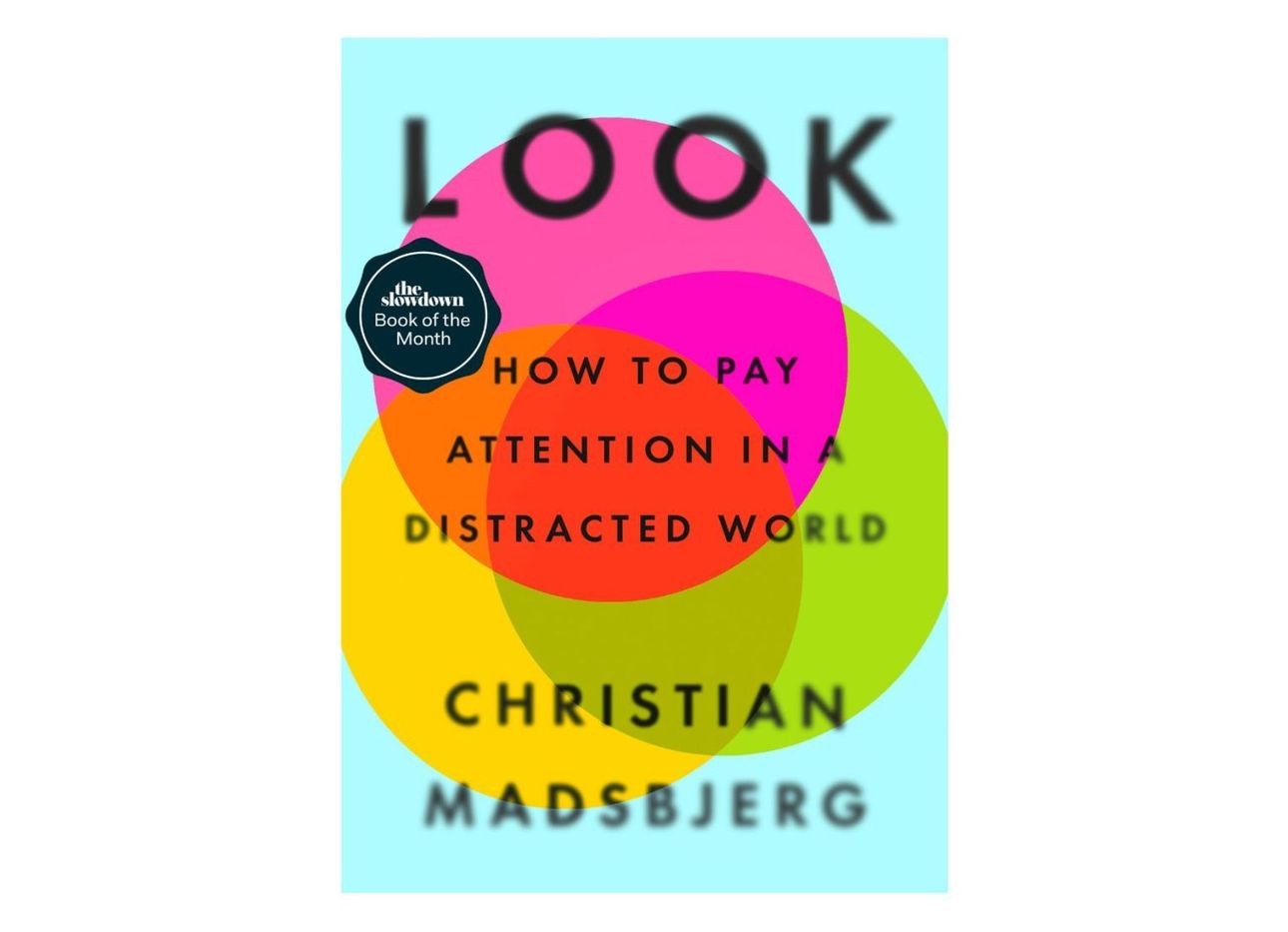
In “Look,” Christian Madsbjerg Celebrates the Slow, Patient Act of Observation
“All too often, we humans push papers, ideas, or money around at a monotonous pace with no time for rest and even less time to stay receptive to a glorious moment of insight,” writes Christian Madsbjerg in his astute new book, Look: How to Pay Attention in a Distracted World (Riverhead Books). The result of decades of research and time spent thinking and writing about the subject of observation, Look spans a vast range of theories—from philosopher Maurice Merleau-Ponty’s notion of embodied perception, to psychologist Max Wetherheimer’s gestaltism, to anthropologist Franz Boas’s abductive reasoning, to novelist Georges Perec’s “endotics,” to author J.A. Baker’s “systematic watching”—to arrive at several glorious, if sometimes seemingly obvious, moments of insight. Culling together centuries of innovative theory and thought, this is a book expertly tailored to our frazzled, media-saturated, iPhone-as-appendage age.
At times teacherly in tone (“I sent you, like my students, out into the world to do direct observation,” Madsbjerg writes to readers toward the conclusion of the book), Look is, for the most part, a rollicking phenomenological ride through the realms of art, science, psychology, anthropology, journalism, philosophy, and beyond. At its heart a tribute to Merleau-Ponty, the book is a treatise on how to pay attention, and more importantly, how to gain and maintain what Madsbjerg, a Danish-born business advisor who’s also the author of the books Sensemaking (2017) and The Moment of Clarity (2014), views as perhaps the ultimate human skill: the observational practice of hyper-reflection. “It all begins with looking,” he writes. “Don’t think, look.”
Unlike Jenny O’Dell’s 2019 best-seller How to Do Nothing, another recent field guide to the attention economy, Look encourages readers to engage with the modern world and to interpret it rather than drop out of it. It is a book about taking in and processing what the 20th-century philosopher Ludwig Wittgenstein once described as “the whole hurly-burly of human actions, the background against which we see any action”—a quote Madsbjerg tactfully employs for the book’s epigraph. (The word hurly-burly reappears several times in Madsbjerg’s text.)

In my favorite part of the book, Madsbjerg goes on an art-viewing pilgrimage in search of the minimalist works of the artist Donald Judd, traveling from Philip Johnson’s Glass House in New Canaan, Connecticut, which is home to a site-specific, permanently installed Judd work; to Dia Beacon in New York’s Dutchess County; to the Chinati Foundation in Marfa, Texas. What he discovers through this journey is that “the truth of our perception is far stranger and more interesting than common assumptions would have us believe.” These strange mysteries of human perception are what Look, at its finest moments, uncovers.
Look can be viewed as a sort of scaffolding, a support structure for how to apply rigorous practices of perception to our daily lives. “What we are ultimately after are not just observations,” Madsbjeg writes, “but insights,” or, as he also puts it, that “flutter in your stomach when you can feel the presence of truth.” This book does not make for light reading, but it’s not overly intellectual, either. It strikes a healthy balance between the heady and the hedonistic.
Look does have its flaws, though, the most glaring of which is that all but three of Madsbjerg’s observational and perceptual exemplars are white men, most of them dead or old: the five mentioned in this review’s first paragraph, as well as the philosophers Simon Critchley (born 1960), Edmund Husserl (1859–1938), and Christian von Ehrenfels (1859–1932); the artists Paul Cézanne (1839–1906), Claude Monet (1840–1926), James Turrell (born 1943), Seth Cameron (born 1982), and Donald Judd (1928–1994); the skeet-shooting expert Gil Ash (whose age we were unable to determine); the microbiologist Antonie van Leeuwenhoek (1632–1723); the astronomer William Herschel (1738–1822); the anthropologists Charles Sanders Peirce (1839–1914) and Pierre Bourdieu (1930–2002); the political theorist Ernesto Laclau (1935–2014); and the journalist and biographer Robert Caro (born 1935). The three women mentioned are Margaret Mead (1901–1978) and Ruth Benedict (1887–1948), both protégées of Boas, and Gillian Tett (born 1967), editor at large of the Financial Times. Not a single person of color is highlighted. Given the diversity of thought explored, without question Madsbjerg could have chosen a more diverse group of people to reflect the book’s subject matter—artists such as David Hammons and Hiroshi Sugimoto, perhaps, the sociologist W.E.B. Du Bois, or the novelists James Baldwin and Toni Morrison.
At one point, Madsbjerg does acknowledge the omnipresence of Western and colonialist thinking, at least in anthropology, writing, “Today we still see too many vestiges of these morally hollow ideas… but we can also recognize how much has changed. Culture was once seen as absolute, preserved in amber, and people were studied and measured solely to determine how successful they were at replicating the mores and the manners of the person doing the observing.” This point, while essential, reads more as a footnote of acknowledgement and makes the white maleness of the book stand out even more.
Look also, at times, verges on the self-promotional, overtly coming across as a sales tool or pitch deck for ReD Associates, as when Madsbjerg mentions the firm’s work for Ford Motor Company: “This is precisely what our ReD researchers discovered when we partnered with the engineering team behind America’s most iconic vehicle—the Ford F-150—to better understand how its drivers found meaning in words like outdoors, environment, conservation, nature, and climate change.” He makes a fine case, but his delivery has a slight smell of salesmanship.
At another point in the book, Madsbjerg describes ReD as “completely idiosyncratic and, in many ways, completely self-indulgent,” which could be a way of summing up the book itself, too. This I mean as a compliment, not as a diss. Actually, it is through the book’s very idiosyncrasy and self-indulgence that Madsbjerg finds rare insights, connecting far-afield dots—the theories of Merleau-Ponty, say, to the works of Judd—that otherwise would remain in the ether.
If there’s one manifesto underpinning Madsbjerg’s radiant text, it’s this: “Go out and find a Looking Lab—or even better, make one of your own. Get away from your screens, turn off your notifications, go out into the wilds of reality, and look around. Let go of all filters—clichés, conventions, color corrections, whatever they may be. Try to pay attention to the simple act of seeing.” What Madsbjerg reveals is that, if we choose to look for them, there are invisible worlds all around us ready to reveal their magic. The seemingly mundane or average can show itself to be extraordinary, but only if we take the time to notice and see it and, more to Madsbjerg’s point, feel it. What Madsbjerg shows—celebrates, even—is our great human capacity to transform and metamorphize through the slow, patient act of observation. How wonderfully simple and profound.